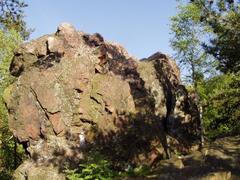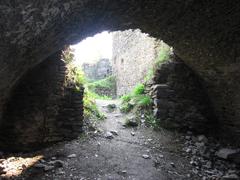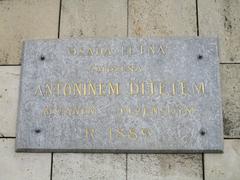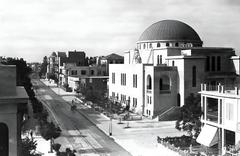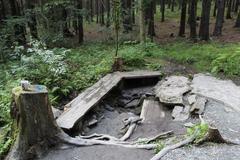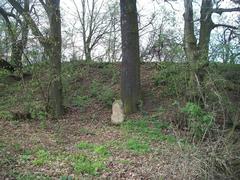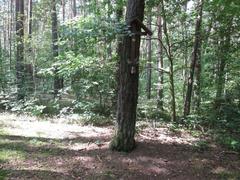Visiting Bedřich Smetana in Plzeň, Czech Republic: Complete Guide with Tickets and Hours
Date: 14/06/2025
Introduction: The Enduring Legacy of Bedřich Smetana in Plzeň
Plzeň, a vibrant city in western Bohemia, is deeply connected to the legacy of Bedřich Smetana—the acclaimed composer often called the “Father of Czech Music.” For travelers interested in Czech musical history, Plzeň offers a unique opportunity to explore Smetana’s formative years, monuments, and the lively Smetanovské dny (Smetana Days) festival. Anchored by the Bedřich Smetana Monument in Kopeckého sady park, the city’s commemoration of Smetana runs through its streets, cultural institutions, and annual events. This guide provides comprehensive information on visiting hours, ticketing, accessibility, transportation, and insider tips to help you experience Smetana’s legacy in Plzeň to the fullest (Visit Plzeň, Smetanovské dny, Classical.cz).
Contents
- Discover the Bedřich Smetana Monument
- Visiting Hours and Ticket Information
- Getting There
- Guided Tours and Special Events
- Accessibility
- Tips for Visitors
- Smetana’s Early Years in Plzeň
- Smetanovské dny Festival: Highlights and Practical Info
- Other Smetana-Related Sites and Attractions
- Recommendations for Planning Your Visit
- Frequently Asked Questions (FAQ)
- Sustainability, Safety, and Responsible Travel
- Conclusion and Additional Resources
Discover the Bedřich Smetana Monument
Location and Overview
The Bedřich Smetana Monument is a central cultural landmark located in Kopeckého sady, a leafy park near Plzeň’s main historic district and Old Town Square. This statue honors Smetana’s immense contributions to Czech music and is a popular spot for both locals and tourists. The surrounding area features further nods to Smetana, including commemorative plaques and the nearby Plzeň City Museum, which occasionally hosts exhibitions on Czech music history.
Visiting Hours and Ticket Information
- Bedřich Smetana Monument: Outdoor public site, accessible daily from 6:00 AM to 10:00 PM. Free entry.
- Plzeň City Museum: Open Tuesday to Sunday, 10:00 AM–6:00 PM; closed Mondays. Adult tickets cost ~100 CZK; discounts offered for students, seniors, and groups. Children under 6 enter free.
- Festival Events: Smetanovské dny concerts and events require tickets, bookable online or at venue box offices. Prices typically range from 150–600 CZK (Plzeňská vstupenka).
Getting There
Plzeň’s historic center is walkable, and the monument is a short stroll from the main train station and bus stops. Tram lines 1, 2, and 4 stop at “Kopeckého sady.” Paid parking is available near the park for visitors arriving by car.
Guided Tours and Special Events
- Guided Walking Tours: Available in multiple languages, these tours highlight Plzeň’s musical history and Smetana’s legacy. Book via the Plzeň Tourist Information Center.
- Smetanovské dny Festival: Held annually from early March to mid-April, this festival features orchestral concerts, chamber music, operas, and lectures across major venues like the Great Synagogue and Měšťanská beseda (Smetanovské dny).
- Commemorative Ceremonies: On March 2nd (Smetana’s birthday), wreath-laying and special performances take place at the monument.
Accessibility
- Monument and Parks: Wheelchair accessible with paved paths; some slopes present.
- Venues: Main festival sites and the Plzeň City Museum offer ramps, accessible restrooms, and assistive services. Contact venues in advance for special requirements.
Tips for Visitors
- Visit in the morning or late afternoon for the best light and fewer crowds.
- Consult the museum website for current exhibitions.
- Combine your Smetana-themed visit with other attractions like the Great Synagogue or Pilsner Urquell Brewery.
- Book concert tickets in advance, especially during the festival.
- Download the Audiala app for up-to-date event information and audio guides.
Smetana’s Early Years in Plzeň
Between 1840 and 1843, Bedřich Smetana studied at the local gymnasium in Plzeň under the guidance of his cousin Josef František Smetana. This period was formative for the young composer—he excelled academically, engaged in the city’s cultural life, performed at social gatherings, and met his future wife, Kateřina Kolářová. Smetana later described these as “the most beautiful years of his life” (Stopy Historie; Plzen.eu).
Smetanovské dny Festival: Highlights and Practical Info
Festival Overview & Venues
Founded in 1981, the annual Smetanovské dny festival is a premier cultural event held from early March to mid-April. It features symphonic and chamber concerts, operas, exhibitions, and lectures, with a focus on Smetana’s masterpieces such as Má vlast and The Bartered Bride. Key venues include:
- Great Synagogue (Velká synagoga): Open daily 10:00 AM–5:00 PM; concerts in the evenings.
- Měšťanská beseda: Civic assembly hall hosting concerts and exhibitions.
- DEPO2015: Contemporary arts venue with select festival events.
Ticketing
- Buy tickets online via Plzeňská vstupenka or at box offices.
- Festival passes available for multiple events.
- Some lectures and community events are free or low-cost.
Accessibility
All major venues are wheelchair accessible and centrally located. English-language support is available at ticket offices and information points.
Festival Highlights
- Opening concert featuring Smetana’s “Má vlast.”
- Performances by Czech and international orchestras.
- Academic symposia and exhibitions on Czech music history.
- Family workshops and interactive programs.
Other Smetana-Related Sites and Attractions
- Bedřicha Smetany Street: Named in Smetana’s honor, this central thoroughfare features historic architecture and memorial plaques (Encyklopedie Plzeň).
- Music Institutions: The Pilsen Philharmonic and Bedřich Smetana Music School regularly present Smetana’s works.
- Republic Square (Náměstí Republiky): Hosts open-air concerts during the festival (try-travel.com).
- Nearby Attractions: Explore the Pilsner Urquell Brewery and St. Bartholomew’s Cathedral.
Recommendations for Planning Your Visit
- Best Time: March–April for the Smetanovské dny festival; late spring and summer for pleasant weather.
- Getting There: Plzeň is 1 hour from Prague by train or bus (discoveringprague.com).
- Accommodation: Book early during festival season for best availability.
- Language: English is widely spoken at tourist sites and festival venues.
- Local Cuisine: Try traditional Czech dishes at restaurants near the city center, many of which offer festival menus.
Frequently Asked Questions (FAQ)
Q: What are the opening hours for the Bedřich Smetana Monument?
A: The monument is in Kopeckého sady park, open daily from 6:00 AM to 10:00 PM. Admission is free.
Q: Are guided tours available in English?
A: Yes, arrange through the Plzeň Tourist Information Center.
Q: How do I buy festival tickets?
A: Purchase online at Plzeňská vstupenka or at venue box offices.
Q: Are festival venues wheelchair accessible?
A: Yes, most major venues and parks offer wheelchair access.
Q: What else can I visit in Plzeň?
A: The Great Synagogue, Pilsner Urquell Brewery, Republic Square, and city museums.
Sustainability, Safety, and Responsible Travel
- Respect park rules and dispose of litter responsibly.
- Support local restaurants, shops, and cultural programs.
- Plzeň is generally safe; use standard precautions in busy areas.
- Emergency number in the Czech Republic: 112.
Conclusion
Visiting Plzeň to discover Bedřich Smetana’s legacy is a rewarding journey into the heart of Czech culture. The Bedřich Smetana Monument, set amidst scenic parks and historic streets, is complemented by the dynamic Smetanovské dny festival, diverse concerts, and vibrant local traditions. With accessible venues, multilingual support, and a wealth of cultural experiences, Plzeň welcomes music lovers and cultural explorers alike. For the latest updates, guided tours, and exclusive content, download the Audiala app and connect with local resources.
Additional Resources
- Visit Plzeň
- Smetanovské dny Festival Information
- Classical.cz – Smetanovské dny
- Visit Plzeň: Smetanovské dny
- Plzeňská vstupenka – Tickets
- Czech National Music and Smetana’s Legacy
